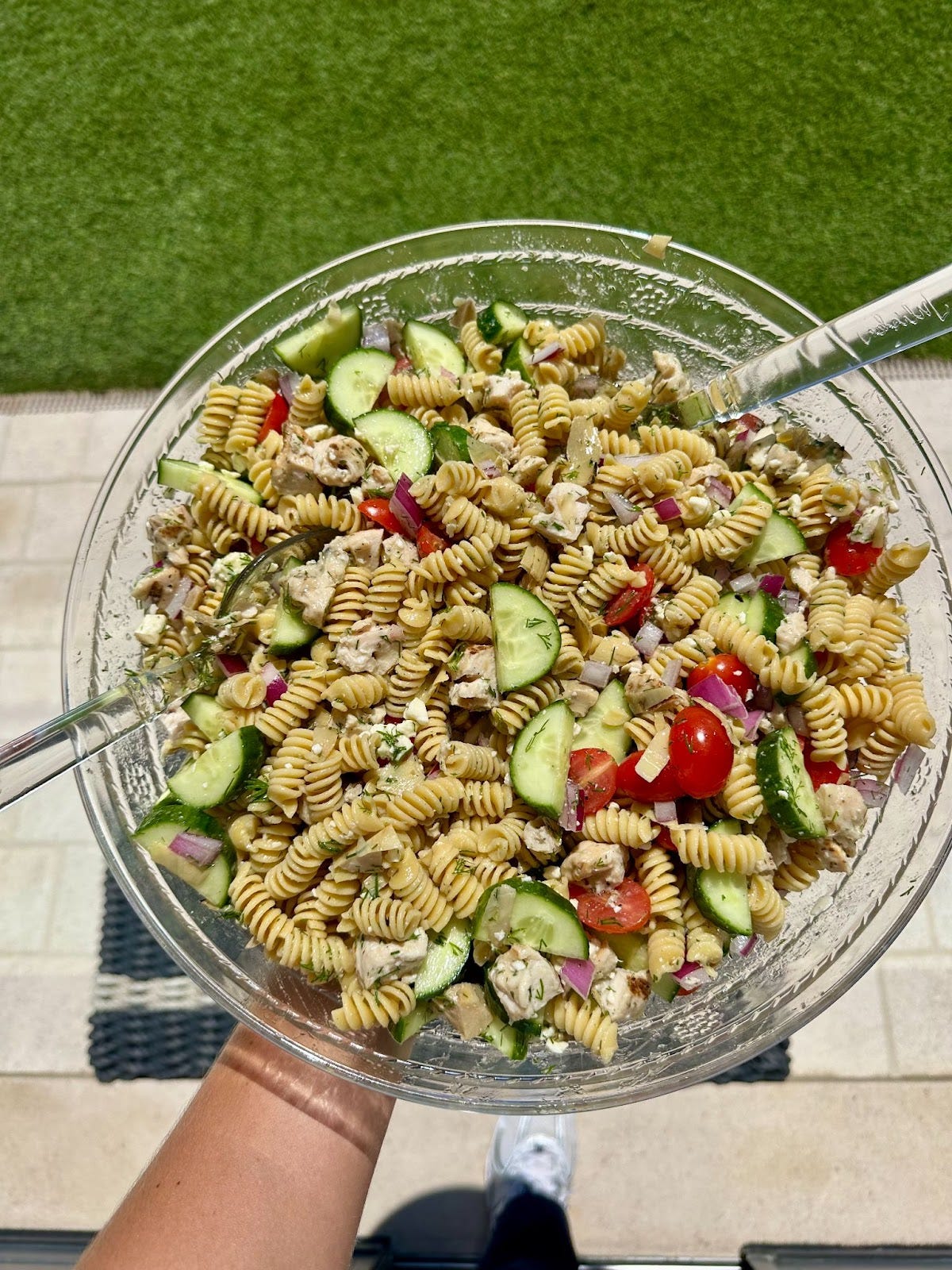Week 13 Roundup
Pre-workout fuel, protein pasta salad, and a massive move by Keurig Dr. Pepper.
Fasted or Fueled
Fasted workouts, typically done in the morning after 8-12 hours without food, have gained popularity for their potential to boost fat burning. When you exercise in a fasted state, your body has depleted its glycogen stores (its primary energy source) and turns to fat for fuel. Research suggests this can improve metabolic flexibility and may help with fat loss over time. Additionally, fasted training can enhance insulin sensitivity, which is beneficial for overall metabolic health. However, it’s important to note that fasted workouts might not be ideal for everyone. Without sufficient glycogen, some people experience fatigue, reduced performance, or even dizziness during high-intensity or prolonged exercise. Many studies say for women specifically, training fasted is not good given it can increase stress hormone cortisol levels, which can contribute to fat storage, muscle loss, and hormonal imbalances. Women's bodies are more efficient at conserving energy stores, including fat and protein, in times of food scarcity. When training fasted, they may tap into lean muscle mass for fuel more readily than men.
Eating before a workout provides your body with readily available energy, allowing you to perform at your best, especially during strength training or endurance activities. Pre-workout nutrition is particularly important if your goal is muscle growth, as consuming protein and carbohydrates before exercising can improve muscle protein synthesis and recovery. For activities requiring maximum effort, such as sprinting or heavy lifting, a pre-workout meal or snack can prevent energy crashes and optimize performance. Ultimately, whether to work out fasted or fed depends on your goals and how your body responds. If fat loss and metabolic health are your priorities, fasted workouts may be worth exploring. But if performance, strength, or muscle growth are your main objectives, fueling up beforehand is likely the better choice. I’ve always preferred training fasted because I don’t like the feeling of having food in my stomach during a workout but if I’m doing any form of higher intensity cardio, say running or interval sprints, I’ll opt for a rice cake with banana and peanut butter or a few dates and cashew butter. At the end of the day, it’s more of a personal preference and there are good arguments for both fasted and fueled training, so do what feels best for your body.
Recipe of the Week
Protein Mediterranean Pasta Salad
1 package of protein pasta
3 large chicken breasts
1 large cucumber
1 package of cherry tomatoes
1 8oz jar of grilled marinated artichokes
1 8oz package of crumbled feta
1/2 large red onion
1 bunch of fresh dill
Juice of 1 lemon
1/2 cup of olive oil
1/4 cup of red wine vinegar
1 tsp of garlic salt
Salt and pepper to taste
Cook pasta until al dente and drain. Bake chicken breast in the oven with a drizzle of olive oil, salt, and pepper at 425 for 15-20 minutes until internal temperature reaches 165. Chop veggies and add to pasta. Cut up chicken breast into small cubes and add to the veggie pasta mixture. Finely chop dill and combine in a bowl with feta, olive oil, red wine vinegar, lemon juice, garlic salt, salt, and pepper. Use a fork to mix together cheese and vinegarette mixture. Pour over pasta salad and toss until thoroughly combined. Store in the fridge for 1-2 hours before serving.
Notable and Newsworthy
Podcast of the Week
Huberman Lab – How to Control Cortisol & Overcome Burnout




